Help Protect Old-Growth Forests Now Before It’s Too Late
Old forests are powerhouses for absorbing and sequestering carbon dioxide, a key driver of the climate crisis. These stunning photographs of the Pacific Northwest old-growth forests showcase their beauty and vital role in the ecosystem.
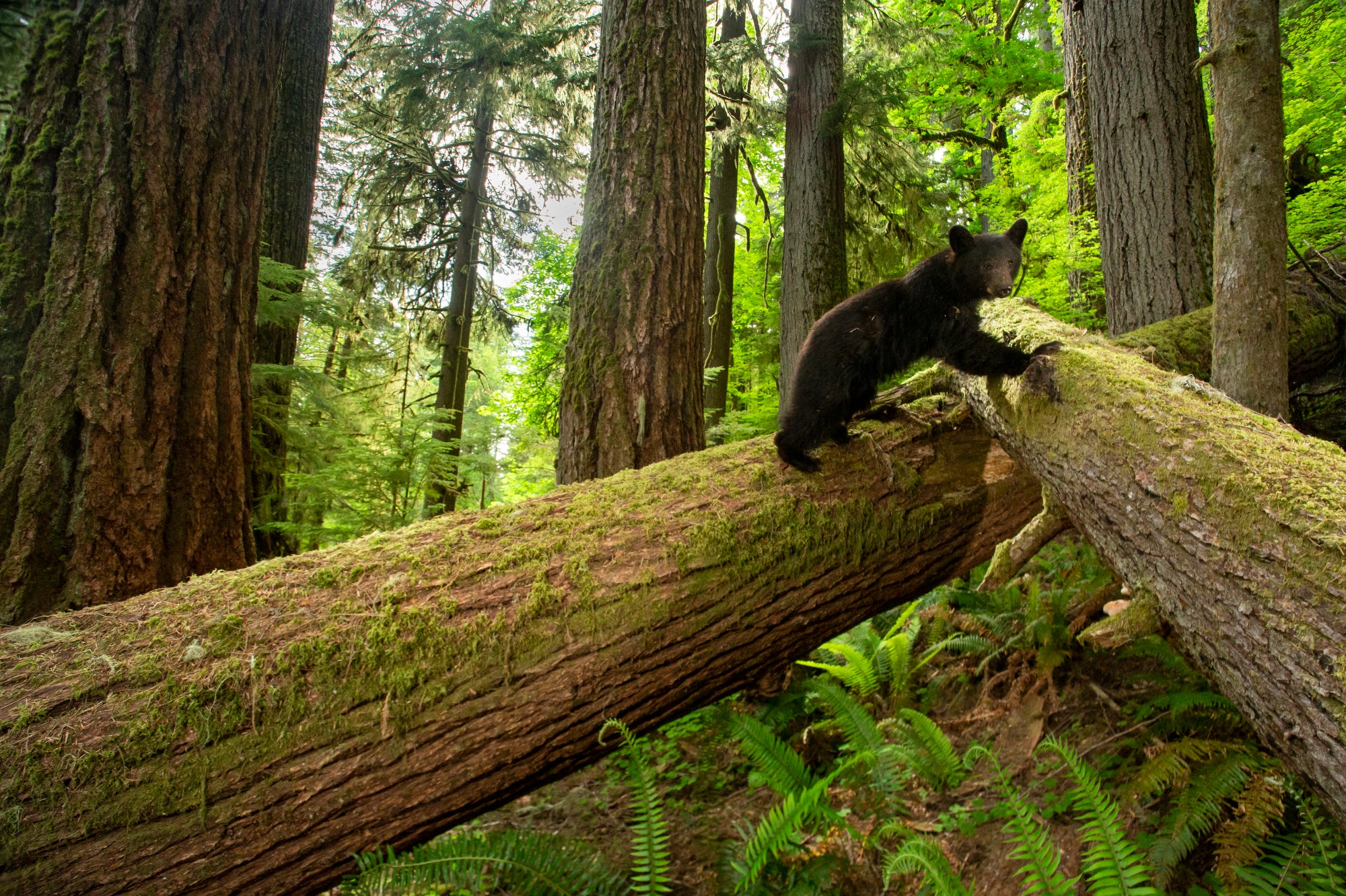
This page was published a year ago. Find the latest on Earthjustice’s work.
On Earth Day 2022, President Joe Biden issued an executive order to conserve America’s mature and old-growth forests on federal lands, kicking off a potentially historic effort to preserve these irreplaceable trees.
That same year, photographer David Herasimtschuk embarked on a long-term endeavor of capturing an entire ecosystem aesthetic while traipsing through old-growth forests of the Pacific Northwest.
As Herasimtschuk told NPR in a recent interview: “Protecting intact, mature and old-growth forests worldwide has been found to be one of the most immediate and cost-effective solutions to mitigating the impacts of climate change, yet adequate policy to manage these forests for ecosystem health and carbon storage has been limited.” Old forests are powerhouses for absorbing and sequestering carbon dioxide, a key driver of the climate crisis, and when left standing are resilient to wildfire.
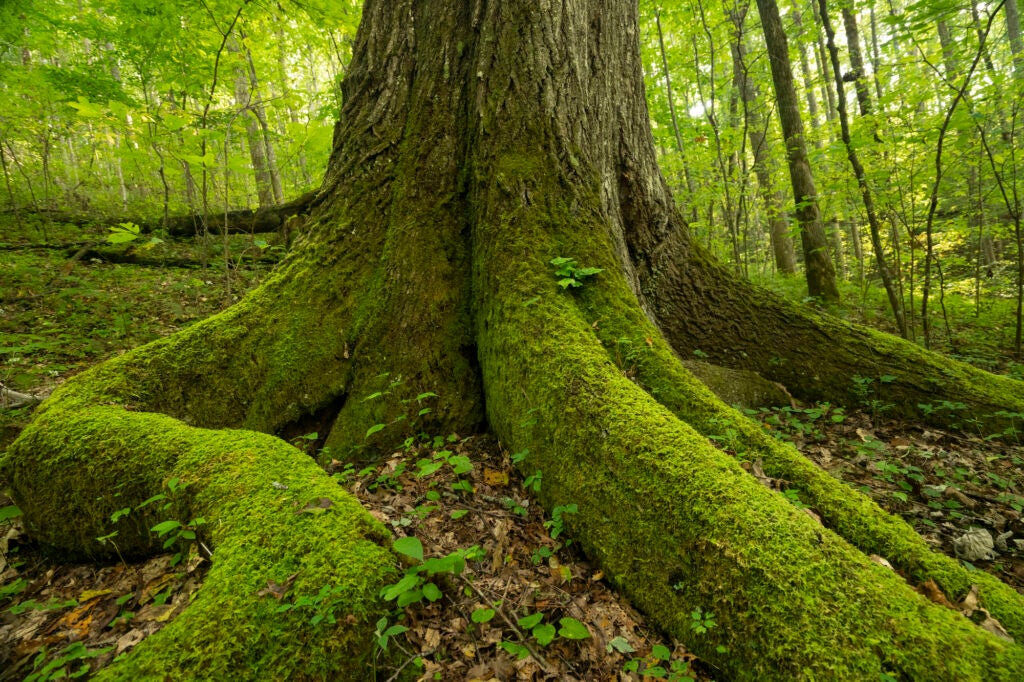
Moss and roots of an old-growth tree in the Chattahoochee-Oconee National Forest in northern Georgia. (David Herasimtschuk)
But since Biden’s executive order, progress toward protecting these climate forests, as they’re often called, has come in fits and starts. In December 2023, the U.S. Forest Service announced it would amend all National Forest management plans to better protect old-growth trees. The agency released a draft of this plan in June, and while a step in the right direction, the draft falls short in several important ways — and it will take a groundswell of support to secure language that will do justice to these ancient forests and our future climate.
Anyone wishing to speak up for the trees only has until September 20 to call on the Forest Service to make the plan stronger.
The National Old Growth Amendment, or NOGA, needs to be bolstered by inserting language that specifically prevents the logging and commercial sale of old-growth trees — and by closing loopholes that undermine old-growth protections. The Forest Service must also advance meaningful protections for mature forests, trees that are not yet old enough to be classified as old growth but are next in line to be the giants of future generations.
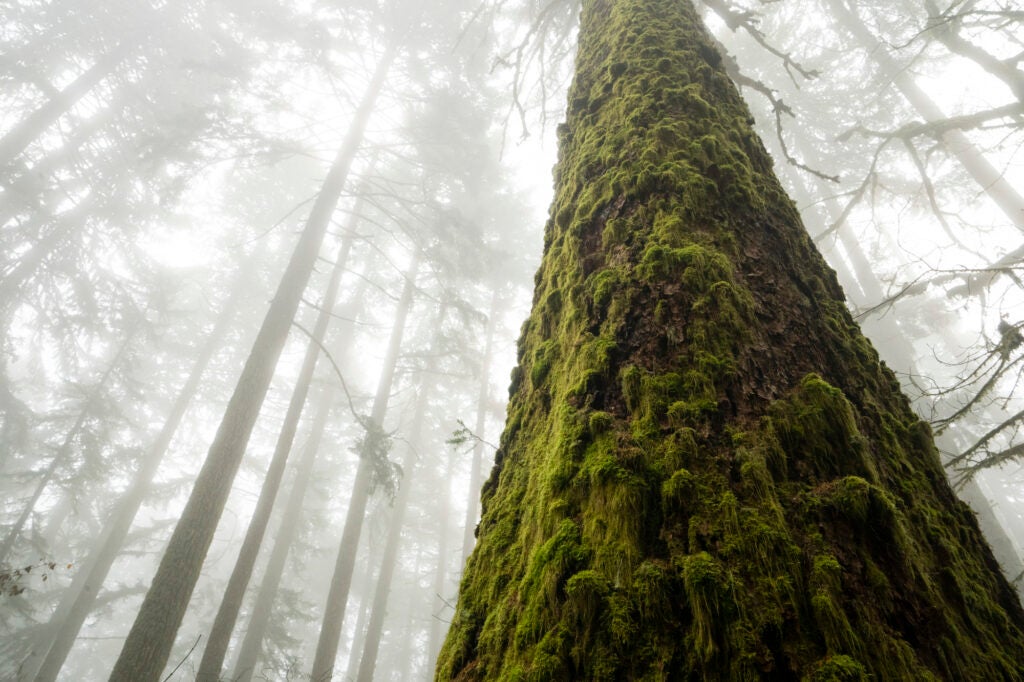
An old-growth Douglas fir stands in the fog in the Siuslaw National Forest in western Oregon. (David Herasimtschuk)
To showcase why these forests are so special, Herasintschuk spent two years hiking, snorkeling, and exploring Pacific Northwest old-growth forests to create an array of stunning photographs of the area. “In the Pacific Northwest, the relationship between salmon and forests embodies a sense of connection that seems almost mystical,” he explained to NPR.
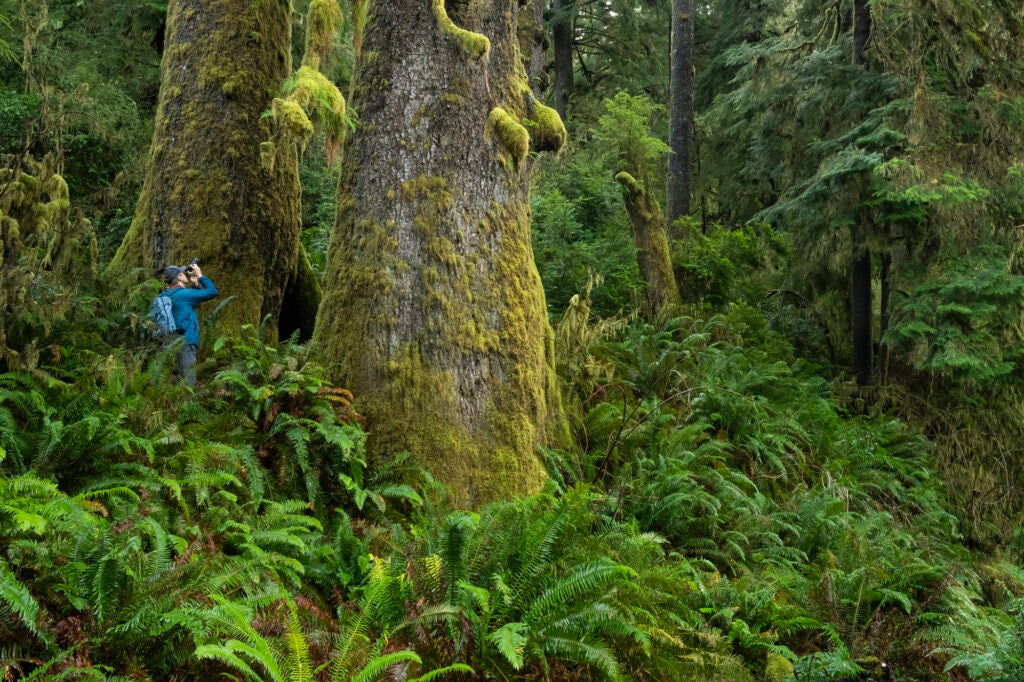
A photographer makes pictures of old-growth trees in the Siuslaw National Forest in western Oregon. (David Herasimtschuk)
For wildlife photographs, he used camera traps, which can sit in the forest for months while awaiting the perfect scene. At times, returning to a trap after some time can mean discovering that a bear has dismantled it, or that the entire thing has been knocked over by a falling branch. Luckily for us, there were some strokes of luck that resulted in captivating images of iconic forest species.

A mountain lion prowls along old-growth tree roots in the Siuslaw National Forest in western Oregon. (David Herasimtschuk)
Please take a moment to lend your voice to the nationwide effort to secure historic protections for mature and old-growth trees. These climate forests will help protect wildlife, fresh drinking water, and a livable planet for future generations if we just keep them intact and don’t cut them down.
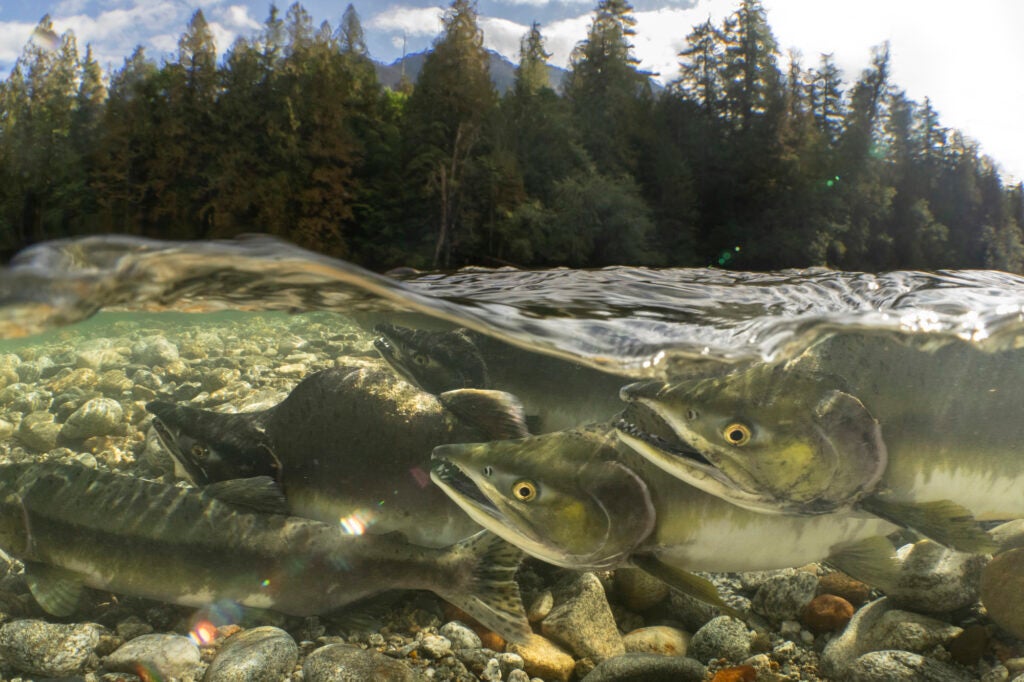
Pink salmon swim through the rivers and streams of Mt. Baker-Snoqualmie National Forest on thewestern slopes of the Cascade Range in Washington. (David Herasimtschuk)
Established in 1987, Earthjustice's Northwest Regional Office has been at the forefront of many of the most significant legal decisions safeguarding the Pacific Northwest’s imperiled species, ancient forests, and waterways.